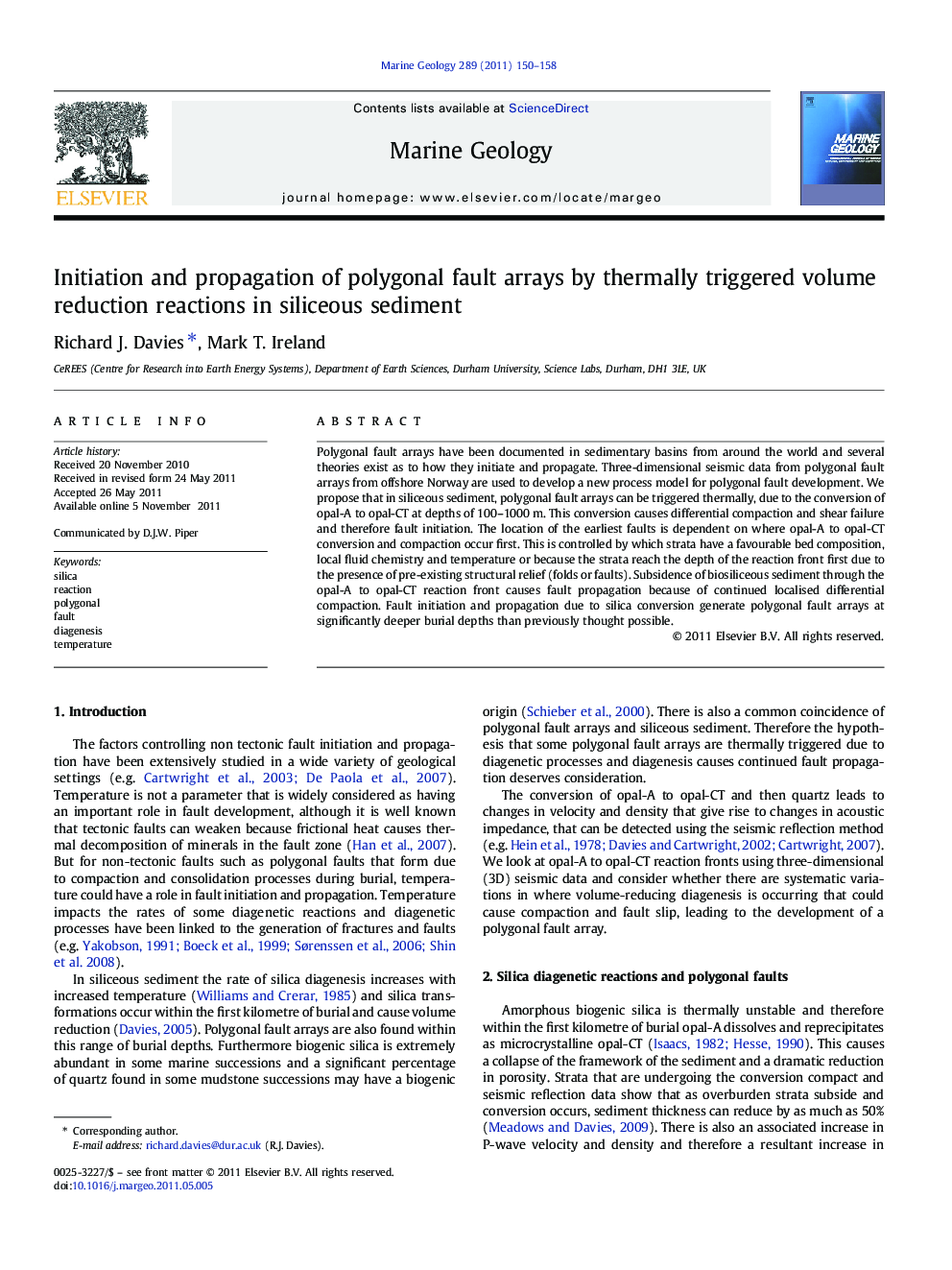| Article ID | Journal | Published Year | Pages | File Type |
|---|---|---|---|---|
| 4718690 | Marine Geology | 2011 | 9 Pages |
Polygonal fault arrays have been documented in sedimentary basins from around the world and several theories exist as to how they initiate and propagate. Three-dimensional seismic data from polygonal fault arrays from offshore Norway are used to develop a new process model for polygonal fault development. We propose that in siliceous sediment, polygonal fault arrays can be triggered thermally, due to the conversion of opal-A to opal-CT at depths of 100–1000 m. This conversion causes differential compaction and shear failure and therefore fault initiation. The location of the earliest faults is dependent on where opal-A to opal-CT conversion and compaction occur first. This is controlled by which strata have a favourable bed composition, local fluid chemistry and temperature or because the strata reach the depth of the reaction front first due to the presence of pre-existing structural relief (folds or faults). Subsidence of biosiliceous sediment through the opal-A to opal-CT reaction front causes fault propagation because of continued localised differential compaction. Fault initiation and propagation due to silica conversion generate polygonal fault arrays at significantly deeper burial depths than previously thought possible.
► Fault that form due to compaction and consolidation can be triggered thermally. ► This is demonstrated for polygonal fault arrays in siliceous sediment. ► Could explain polygonal faults in siliceous sediment in other regions. ► This is the first example of thermal triggering of faults.
